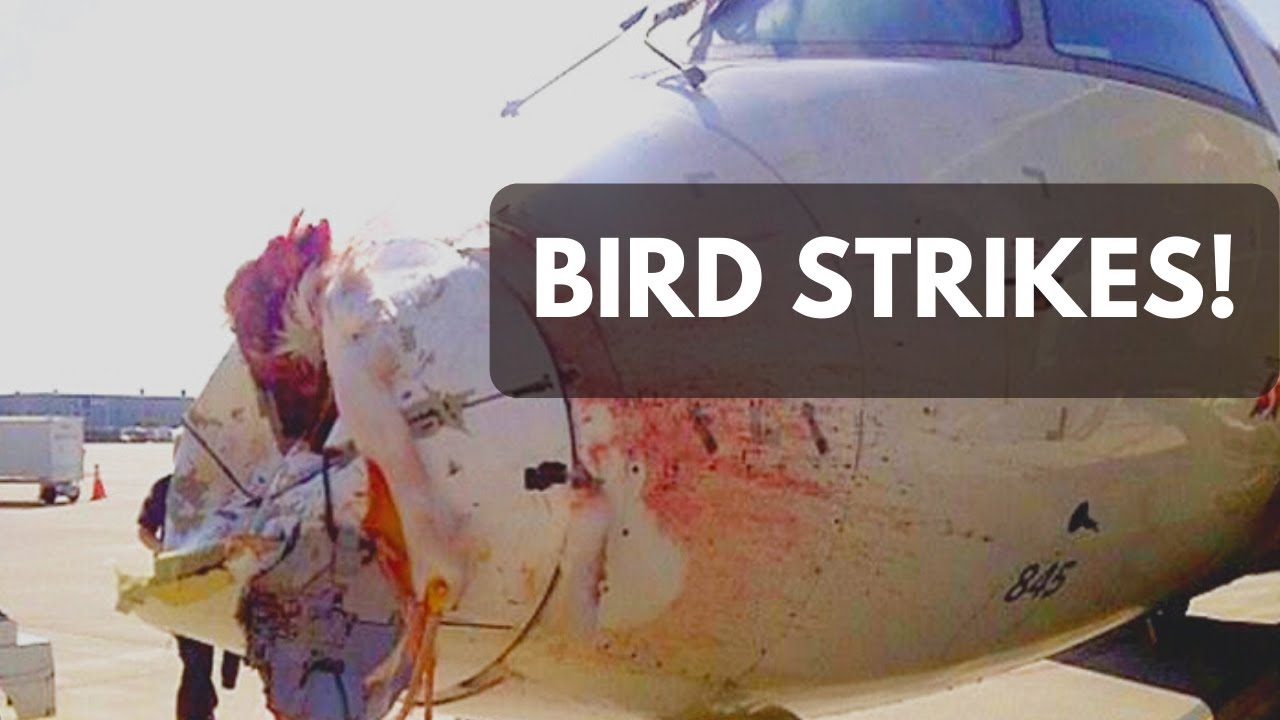From Office to Cockpit: How Indian Working Professionals Are Becoming Commercial Pilots?
The Indian aviation industry continues to grow from strength to strength. Traditionally, many young people dreamed of becoming pilots

Accidents are unfortunate in any field. Aviation is not an exception to this, as accidents of different magnitudes take place here as well. One reason for the aircraft accidents and malfunctions is a bird striking the aircraft. These incidents occur frequently in the world of aviation, but the impact on an aircraft and its passengers is rather significant. A lot of you can get confused by the name, but bird strikes are not just limited to birds, but also bats and other wildlife. Bird strikes only have an immediate impact, but they can also attain fairly serious proportions in the future as well.

As we discussed earlier, instances of bird strikes occur periodically, serving as case studies for authorities to take corrective measures. An incident like this occurred around a decade and a half ago, in 2009, when US Airways Flight 1549 had to make an emergency landing in the Hudson River after colliding with a flock of geese.
The landing, called "Miracle on the Hudson," highlighted the dangers of bird strikes and the importance of pilot skill in such a situation.
Another incident occurred in 1960, when Flight 375 of Eastern Airlines struck a flock of European starlings, which led to the loss of both engines and the aircraft. This highlighted the importance of effective bird strike prevention strategies.

Bird strikes can take place because of various factors, but to name the top contributors, they are the behaviour of the birds and the patterns in which they migrate. Birds often fly in flocks, particularly when they are going for migration and this increases the chances of a bird strike with an aircraft. Understanding these behaviours is important for developing strategies to alleviate bird strikes.
Migratory birds travel long distances and across several regions, increasing the possibility of intersecting the flight paths of planes. Some locations experience higher bird strike risks because of being close to migratory routes.
These areas must be identified to go through targeted prevention measures. Overall, bird strikes are not solely due to these two factors, and other factors must also be taken into account to reduce the number of such incidents in the world of commercial aviation.

As mentioned earlier, birds migrate over long distances, known as flyways. These are used by numerous birds, making them vulnerable to collisions with aircraft. Additionally, bird behaviour can result in large concentrations of birds in some areas, increasing the chances of bird strikes. Understanding the behavioural patterns comes in handy for decreasing the number of incidents of a bird striking an aircraft.
Different birds often follow different migration patterns, with some of them migrating throughout the day and others doing this at night. This complicates the situation even more, with regard to the events of bird strikes.
Apart from this, another significant difference is the alteration of the seasons or the weather cycle, as well as changes in the bird populations. By examining bird behaviour and migration patterns, aviation authorities can develop inclusive strategies to decrease the occurrence of bird strikes and ensure the safety of air travel.

Bird strikes can pose a great deal of risk to flight safety. A bird strike can damage the engines, wings and windows. This damage requires the repair of the aircraft, ultimately resulting in financial losses.
Bird strikes can also cause injuries to passengers and crew. They have environmental implications as well. The remains of the bird can contaminate runways and increase the risk for other planes as well.
Aviation authorities should always give heed the need to invest in bird strike prevention measures to reduce the impacts of these incidents. This involves modifying the habitat, preventing acoustic disturbances, and implementing wildlife management strategies to decrease the risk of bird strikes. Ultimately, the impact of bird strikes on airplanes underscores the significance of implementing proactive methods to ensure the efficiency and safety of aviation operations.

To address the incidents of bird strikes in aviation, several preventive measures need to be implemented. These measures mostly focus on aircraft management. Airports can implement bird deterrent systems and wildlife management programs to reduce the attraction of birds to airports. Apart from this, airports can also utilize sound deterrents, pyrotechnics, and other bird control methods to keep birds away from areas where aircraft are in motion.
In addition, aircraft management plays a significant role in preventing bird strikes on aircraft. This involves designing the aircraft with robust windshields and engines to mitigate the damage caused by bird strikes. Pilots and flight crews can be trained to recognize and report the incidents of bird strikes, allowing airports and aviation authorities to more efficiently evaluate and address potential bird strike risks.
Understanding the causes of bird strikes holds significant importance in developing effective prevention plans and mitigating their impact. Bird behaviour and weather play a role in defining the severity of bird strikes.
Bird strikes can bring about minor damage and even major setbacks, highlighting the significance of all the R&D going on for the same. With the advancement of aviation technology, professionals should collaborate with wildlife experts to develop effective plans for managing bird strikes.
Also, pilot training and air traffic control procedures should integrate practices for mitigating bird strike risks. By taking heed of research, collaboration, and proactive measures, the aviation sector is mitigating the impact of bird strikes. For enrolling in pilot training, you can always come to us at Flapone Aviation. We are one of the premier pilot training institutes in India, boasting world-class infrastructure and experienced instructors.
Connect with our aviation mentors to find the right path toward becoming a licensed aircraft pilot.